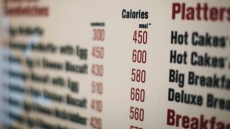From the biggest botanical gardens to the smallest backyard plots and terraces, there's a movement underway to make gardens work harder for the environment.
"It's no longer enough for a garden to just look pretty. Every garden needs to do more and every garden matters," said Douglas Tallamy, a professor in the department of entomology and wildlife ecology at the University of Delaware.
Because of global warming and habitat destruction, he said, "today, gardens need to support life, sequester carbon, feed pollinators and manage water. It's a lot to ask, but it doesn't have to look messy and it may be the key to our survival."
For many people who aren't sure what they can do about climate change, home gardens provide an opportunity to make a palpable difference.
That sense of purpose is creating a change in garden
"It's one of the few things an individual can do to mitigate climate change. The cumulative impact on the environment is huge, plus it's easy, affordable and fun," said Ann Savageau, who ripped out most of her lawn in drought-parched Davis, California, a year ago and replanted with desert grasses and other native plants.
"The increase we've seen in pollinators, butterflies and birds at our house is really exciting, and we reduced our water usage by two thirds," she said.
Whereas there used to be enough land for wildlife and humans to exist separately, it's become essential that we share habitats, Tallamy and Rick Darke argue in their book, "The Living Landscape: Designing for Beauty and Biodiversity in the Home Garden" (Timber Press, 2014).
"Unless we share our space with nature, the plants on which bees, caterpillars, butterflies, birds and other wildlife depend will not survive," Tallamy said.
Earth-friendly gardens consist mostly of native species, on which local wildlife depends, experts say.
"Gardening for wildlife, especially birds, is really the hot thing now in horticulture and gardening. The trend is toward naturalistic garden design, with native plants. It's a High Line kind of a look," said Kristin Schleiter, associate
The High Line, the New York City park and garden which runs along a strip of old elevated track, "does symbolize a newer
About half the plants are natives and the other half are self-seeded species, which require relatively little maintenance and water. "There's way more forgiveness and durability about it," he said.
"A lot of people have totally been inspired by the wild look and have tried it on their own at home," Smarr said.
A few specific ways that home gardeners can go easy on the planet:
___
PLANT AN OAK TREE
Oaks sequester lots of carbon, have enormous root systems that help manage water and, according to Tallamy and Darke, are fantastic at supporting wildlife. "There are 557 species of caterpillars in the Mid-Atlantic states, and they're all bird food. The birds eat all the caterpillars to support their young, so you don't need to worry about defoliation."
___
FEED THE POLLINATORS
Tallamy warns that without pollinators, 80
___
MINIMIZE LAWN, CONCRETE AND NON-NATIVE ORNAMENTAL SPECIES
"Around 92
"In the typical American yard, 80
Even apartment dwellers can help, by planting native species on roofs and terraces.
Schleiter said: "Really think about the amount of chemical that's put on our lawns. If you're not using all of your lawn, just let the grass grow out and maybe put in some native perennials. It all adds up."
___
AVOID PESTICIDES
"If you're planting a garden for bees and butterflies, don't use pesticides that will kill bees and butterflies," warned Schleiter. "It sounds obvious, but people do it all the time. You have to be extra sure that when you buy a plant at the nursery, it hasn't been sprayed with any pesticides. Nurseries do it a lot and you need to be extremely careful."





